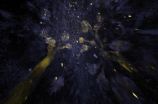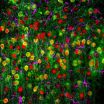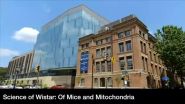(Press-News.org) HOUSTON – (July 31, 2014) – Scientists have long speculated that mosaicism – a biological phenomenon, in which cells within the same person have a different genetic makeup – plays a bigger role in the transmission of rare disease mutations than is currently known. A study conducted by an international team of scientists led by Baylor College of Medicine sheds new light on the frequency of mosaicism in genomic disorders and its influence on recurrence risk.
The study, which was published today in the American Journal of Human Genetics, also included scientists from the University of Leuven in Belgium, St. George's Healthcare Trust in London, Radbound University Medical Center in Nijmegen, Netherlands, the Institute of Mother and Child in Warsaw, Poland, and Trinity University in San Antonio, Texas.
One human, multiple genomes
With recent advances in genome technology, it is becoming increasingly apparent that a human individual is made up of a population of cells, each with its own "personal genome," said Dr. James Lupski, the Cullen Professor of Molecular and Human Genetics at Baylor, and a senior and corresponding author on the report. "Before this study, we understood very little about the centrality of mosaicism in the development of human disease."
In 2011, realizing the suspected importance of this, Lupski and his colleague Dr. Paweł Stankiewicz, associate professor of molecular and human genetics at Baylor and also a senior and corresponding author on the report, tasked graduate students in their labs Ian Campbell and Bo Yuan – both currently fourth-year graduate students and co-first authors on the paper – with providing a deeper understanding of the role of mosaicism and how it may contribute to genomic disorders.
It turns out Lupski and Stankiewicz's hunch was right: the study found that mosaicism is much more common than originally thought and contributes to recurrence risk in future offspring.
Mutations and mosaicism
The classic way of thinking about new disease mutations – those affecting children with disease when the parents are unaffected – is that they pass between two generations during reproduction and arise in either the sperm or egg, said Campbell, a first author on the report and a fellow of the Baylor College of Medicine Medical Scientist Training Program
Alternatively, with mosaicism, these mutations may occur throughout the development process of the mother or father, said Campbell.
"Depending upon when during the human life cycle the mutation arose more or less cells in an individual are mutant," said Campbell. "If the mutation occurs earlier, then more of your body is mutant and those cells can contribute to sperm or eggs that can in turn be passed on to offspring."
Currently, gene analysis techniques are limited in sensitivity to detect these mutations since their presence at the molecular level is so low, Stankiewicz said.
Campbell and his team developed a new amplified analysis tool that could better capture these mutations using a parent's blood sample.
Stankiewicz and Lupski established an international team to put the tool to work. In a study of 100 families of children with rare genetic diseases, they identified four families with unexpected mosaic mutations.
"The number of families with mosaicism was much higher than we expected," said Campbell.
Previous research had suggested mosaic parents were less than a half percent of cases, Stankiewicz said. "The finding of 4 percent was a surprise."
Recurrence risk
The surprise findings opened a new challenge for the team.
"We got into this broader conversation about how this finding fits into our understanding of the emergence of these mutations and how they transmit between generations," said Dr. Chad Shaw, associate professor of Molecular and Human Genetics at Baylor and a co-author on the report. "We tried to formalize that into a mathematical model with the intent of providing important information for recurrence risk counseling."
"Often parents of children with severe diseases come to us and want to know what this is, why it happened and what is the chance it will happen again," said Lupski.
Shaw, a statistician and adjunct professor in the Rice University Department of Statistics, developed a mathematical model that could accurately estimate the recurrence risk.
"We found something unexpected that we probably should have seen coming," said Shaw. "There is a difference in risk between moms and dads."
The team determined that two main factors played a role in determining recurrence risk – who is the parent of origin of the mutation and can the mutation be detected in that parent's body, for example their blood?
In the study, mothers were estimated to be about 25 times more likely than fathers to have a recurrence. Meanwhile, mothers who had mosaic mutations identifiable in their blood are twice as likely to have a recurrence than non-mosaic mothers, and fathers are about 50 times more likely to have a recurrence if the mutation is detected in their blood.
"This study gives new light to data already in the literature that directly supports this model," said Lupski.
INFORMATION:
Additional collaborators include Przemyslaw Szafranski, Katie S. Plunkett, Amber N. Pursley, Sung-Hae L. Kang, Weimin Bi, Seema R. Lalani, Sandesh C. S. Nagamani, Ayelet Erez, Carlos A. Bacino, Ankita Patel and Sau Wai Cheung, all of Baylor College of Medicine; Caroline Robberecht and Joris R. Vermeesch of the University of Leuven; Rolph Pfundt, Joris A. Veltman and Lisenka E. L. M. Vissers of Radbound University Medical; Meriel M. McEntagart, Mala Vast, Michael Patton and Karen Marks of St. George's Healthcare Trust; Magdalena Bartnik and Barbara Wiśniowiecka-Kowalnik of the Institute of Mother and Child; and Peter Olofsson of Trinity University.
Funding for this work was provided by the National Institute of Neurological
Disorders and Stroke (F31 NS083159, R01 NS058529); Doris Duke Charitable Foundation; Intellectual and Developmental Disabilities Research Center (P30 HD024064); the Baylor-Hopkins Center for Mendelian Genomics (U54HG006542);National Heart Blood and Lung Institute (R01 HL101975); Polish Ministry of Science and Higher Education (R13-0005-04/2008).
Glenna Picton
713-798-4710
picton@bcm.edu
http://www.bcm.edu/news
Mosaicism: Study clarifies parents as source of new disease mutations
2014-07-31
ELSE PRESS RELEASES FROM THIS DATE:
In high-stakes soccer, goalkeepers exhibit 'gambler's fallacy'
2014-07-31
When goalkeepers are pitted against multiple kickers in tense penalty shootouts, their attempts to dive for the ball show a predictable pattern that kickers would do well to exploit. After kickers repeatedly kick in one direction, goalkeepers become increasingly likely to dive in the opposite direction, according to an analysis of all 361 kicks from the 37 penalty shootouts that occurred in World Cup and UEFA Euro Cup matches over a 36-year period.
The findings reported in the Cell Press journal Current Biology on July 31 highlight the importance of monitoring and predicting ...
Selective logging takes its toll on mammals, amphibians
2014-07-31
The selective logging of trees in otherwise intact tropical forests can take a serious toll on the number of animal species living there. Mammals and amphibians are particularly sensitive to the effects of high-intensity logging, according to researchers in the Cell Press journal Current Biology on July 31 who conducted a meta-analysis of almost 50 previously published studies from around the world.
"Selective logging in the tropics is not a new phenomenon, and it will continue to be a common use of the forest," says Zuzana Burivalova of ETH Zurich, Switzerland. "We hope ...
See-through organs and bodies will accelerate biomedical discoveries
2014-07-31
The ability to see through organs and even the entire body to visualize long-range connections between cells as well as fine-grained cellular structures has been a long-time dream of biologists. A study published by Cell Press July 31st in the journal Cell has now made that dream a reality, revealing simple methods for making opaque organs, bodies, and human tissue biopsies transparent, while keeping the cellular structures and connections intact. The protocols could pave the way for a better understanding of brain-body interactions, more accurate clinical diagnoses and ...
Goalkeepers prone to 'gambler's fallacy' but penalty takers fail to exploit it
2014-07-31
After a string of penalties aimed in the same direction, goalkeepers are more likely to dive in the opposite direction on the next penalty but kickers fail to exploit this pattern, finds new UCL research.
The study, published in Current Biology, shows that penalty shoot-outs in international tournaments resemble a psychological game. The researchers studied penalty shoot-out videos from all World Cup and Euro finals tournaments between 1976 and 2012.
They found that each team of kickers produced more or less random sequences of kicks to the left or the right of the ...
Birthday matters for wiring-up the brain's vision centers
2014-07-31
Researchers at the University of California, San Diego School of Medicine have evidence suggesting that neurons in the developing brains of mice are guided by a simple but elegant birth order rule that allows them to find and form their proper connections.
The study is published online July 31 in Cell Reports.
"Nothing about brain wiring is haphazard," said senior author Andrew Huberman, PhD, assistant professor in the Department of Neurosciences, Division of Biological Sciences and Department of Ophthalmology, UC San Diego.
A mature, healthy brain has billions ...
New mapping approach lets scientists zoom in and out as the brain processes sound
2014-07-31
Researchers at Johns Hopkins have mapped the sound-processing part of the mouse brain in a way that keeps both the proverbial forest and the trees in view. Their imaging technique allows zooming in and out on views of brain activity within mice, and it enabled the team to watch brain cells light up as mice "called" to each other. The results, which represent a step toward better understanding how our own brains process language, appear online July 31 the journal Neuron.
In the past, researchers often studied sound processing in various animal brains by poking tiny electrodes ...
'Rewired' mice show signs of longer lives with fewer age-related illnesses
2014-07-31
VIDEO:
TRAP-1 is a protein vital for the production of chemical energy in the mitochondria of cells, but it is over-produced in tumor cells. The laboratory of Dr. Dario Altieri at...
Click here for more information.
While developing a new cancer drug, researchers at The Wistar Institute discovered that mice lacking a specific protein live longer lives with fewer age-related illnesses. The mice, which lack the TRAP-1 protein, demonstrated less age related tissue degeneration, ...
Drug target identified for common childhood blood cancer
2014-07-31
In what is believed to be the largest genetic analysis of what triggers and propels progression of tumor growth in a common childhood blood cancer, researchers at NYU Langone Medical Center report that they have identified a possible new drug target for treating the disease.
T-cell acute lymphoblastic leukemia is one of the most common and aggressive childhood blood cancers. An estimated quarter of the 500 adolescents and young adults diagnosed with the cancer each year in the U.S. fail to achieve remission with standard chemotherapy drugs.
In a cover-story report ...
Molecule enhances copper's lethal punch against microbes
2014-07-31
DURHAM, N.C. – Harnessing a natural process in the body that pumps lethal doses of copper to fungi and bacteria shows promise as a new way to kill infectious microbes, a team of scientists at Duke University report.
Publishing in the July 31, 2014, issue of the journal Chemistry & Biology, the researchers describe a way of exploiting the unique chemical response from the body's immune system to attack pathogens using copper, long known for its antimicrobial properties, in a way that minimizes harm to the rest of the body.
The findings in cell and animal models represent ...
Master HSF supports reprogramming of normal cells to enable tumor growth and metastasi
2014-07-31
CAMBRIDGE, Mass. (July 31, 2014) – Long associated with enabling the proliferation of cancer cells, the ancient cellular survival response regulated by Heat-Shock Factor 1 (HSF1) can also turn neighboring cells in their environment into co-conspirators that support malignant progression and metastasis.
The finding, reported by Whitehead Institute scientists this week in the journal Cell, lends new insights into tumor biology with significant implications for the diagnosis, prognosis, and management of cancer patients.
Over the past several years, researchers in the ...



